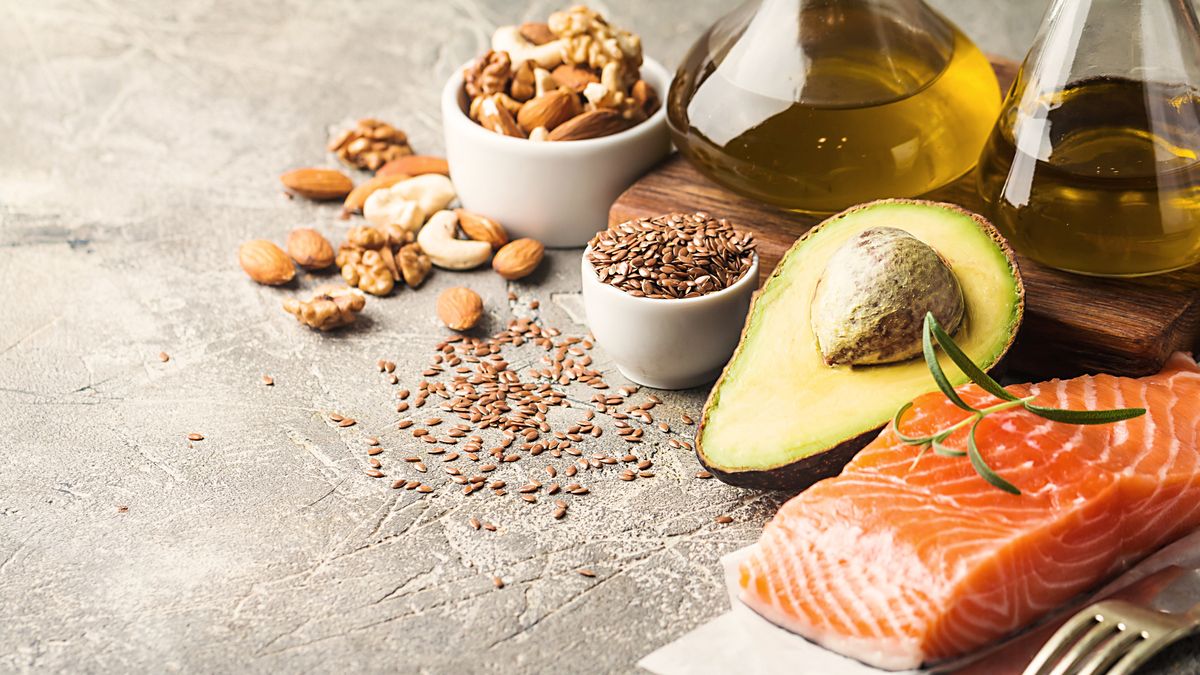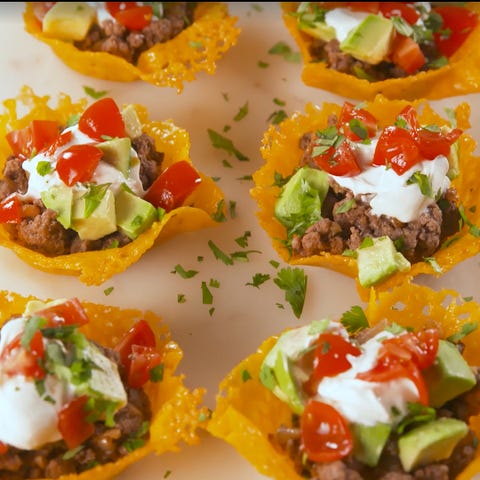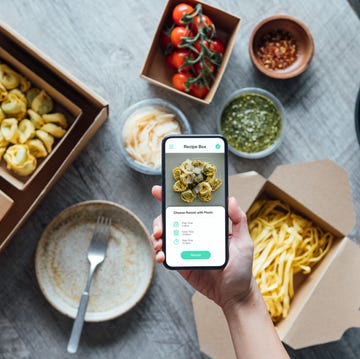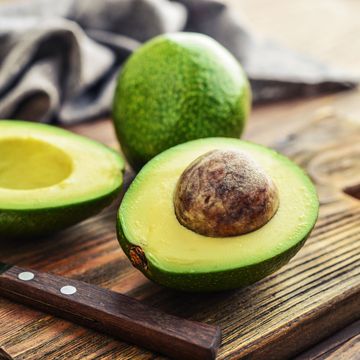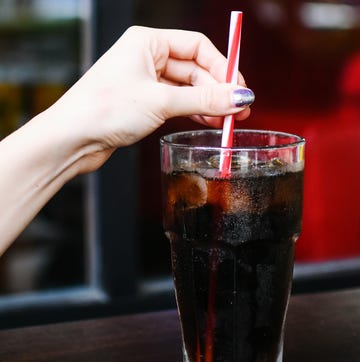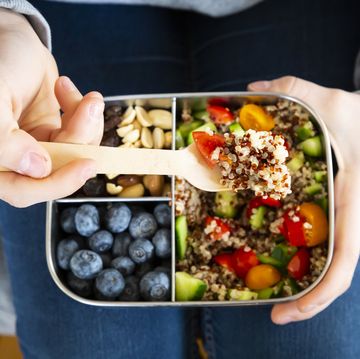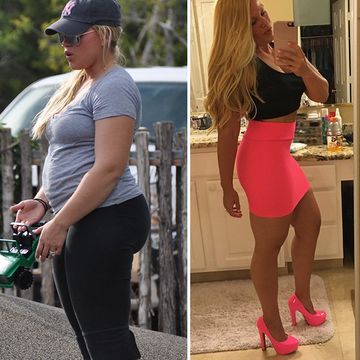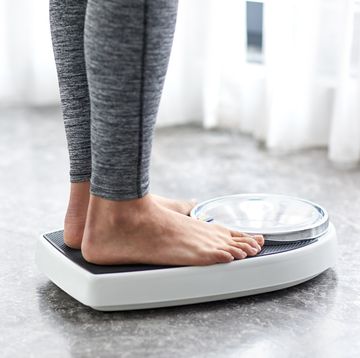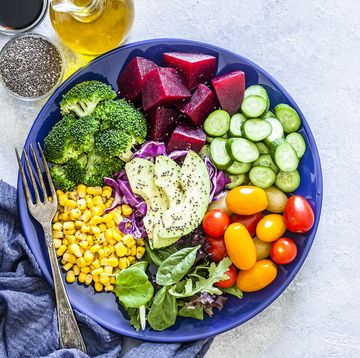This article was reviewed by Jes Harvey, RD. Harvey is a registered dietitian specializing in the ketogenic diet for children and adults. She is a certified specialist in pediatric nutrition and educates children with epilepsy on the ketogenic diet as an anti-seizure medication. Harvey also manages a private nutrition practice consulting adults on the ketogenic way of eating.
The keto diet remains one of the most highly searched and buzziest lifestyles. It's a low-carb, high-fat eating plan that's designed to jumpstart a process called ketosis, where your body burns fat rather than carbs for energy.
Some celebs swear by the keto diet, like Adriana Lima, Kim Kardashian, and Megan Fox, but not everyone is a fan though. Jillian Michaels and Witney Carson from Dancing with the Stars are two examples who have not given the diet a ringing endorsement.
Although there are positives to the keto diet, there can also be some cons, especially if you're not doing it properly. “When these fats are primarily from unhealthy sources, the individual places themselves at risk for long-term health consequences,” says Trista Best, RD at Balance One Supplements.
And just like with all things health- and wellness-related, everyone is different. If you are entertaining the idea of trying the keto diet for yourself, you may have some questions. Here is everything you need to know about the keto diet, including how it works and exactly how much butter and cheese you get to eat.
What exactly is the keto diet?
Short for “ketogenic diet,” this eating plan is all about minimizing your carbs and upping your fats to get your body to use fat as a form of energy, says Scott Keatley, RD, of Keatley Medical Nutrition Therapy.
While everyone's body and needs are slightly different, that typically translates to:
- 60 to 75 percent of your calories from fat
- 15 to 30 percent of your calories from protein
- 5 to 10 percent of your calories from carbs
That usually means eating no more than 50 grams of carbs a day (some strict keto dieters even opt for just 20 grams a day).
What is ketosis?
After about two to seven days of following the keto diet, you go into something called ketosis, or the state your body enters when it doesn't have enough carbs for your cells to use for energy. That's when you start making ketones, or organic compounds that your bod then uses in place of those missing carbs. At this point, your body also starts burning fat for more energy, says Beth Warren, RD, founder of Beth Warren Nutrition and author of Living A Real Life With Real Food.
So how do you know you're in ketosis? There are a few side effects that can tip you off, like breath that smells a bit like nail polish remover (seriously), or you can use devices like keto testing strips (which you pee on) or this breath analyzer to tell you.
How was the keto diet developed?
Believe it or not, the keto diet was originally designed to help people who suffer from seizure disorders—not to help people lose weight, says New York-based nutritionist Jessica Cording, RD. That's because both ketones and another chemical produced by the diet, called beta-hydroxybutyrate, may help minimize seizures.
But people who started following the keto diet noticed weight loss for a few reasons: When you eat carbs, your body retains fluid in order to store carbs for energy (you know, in case it needs it). But when you’re not having much in the carb department, you lose this water weight, says Warren. Also, it's easy to go overboard on carbohydrates—but if you're loading up on fat, it may help curb cravings since it keeps you satisfied.
That, plus the fact that ketosis encourages your body to burn fat, means you can end up with pretty dramatic weight loss.
Are there different types of ketogenic diets?
While it’s easy to think that the keto diet is one-size fits all, there are actually several different types of keto diets, and they all have different benefits, depending on what your nutritional goals are.
“They all have the same gist—super low-carb, high-fat—but they each have their own set of unique guidelines,” says Vanessa Rissetto, RD, CDN. Below are the four most common variations of the keto diet.
Cyclic Keto Diet
“The cyclic keto diet is similar to standard keto, with the exception of one to two days per week,” explains Rissetto. “Five to six days per week, a cyclic keto dieter will eat according to standard keto guidelines. Then, for one or two days, they will have a ‘carb cycle’—also commonly known as a ‘carb refeed’ day. On this day, they will eat about 140 to 160 grams of carbohydrates.”
This type of keto diet is often followed by athletes, since they require a carb refeed day to replenish glycogen stores in their muscles. “High levels of athletic training drains nearly all glycogen from their muscle stores, so it’s necessary to replenish them,” says Rissetto.
It’s important to note, though, even if you choose to do this diet, that doesn’t mean your days off should involve tons of processed foods and desserts. Instead, look to whole grains, starchy vegetables, and fruits for your carb intake.
Targeted Keto Diet
“On this diet, you follow all the guidelines of the standard keto diet, with one exception—before intense workouts, you eat carbohydrates,” explains Rissetto. “Typically, targeted keto dieters will consume anywhere from 25 to 50 grams of carbohydrates about 30 minutes to an hour prior to working out. Dieters often find that this helps them feel stronger and more capable during workouts.
While this does take the body out of ketosis temporarily, it will resume within a few hours, depending on how many carbs you consumed. Essentially, the theory behind this diet is that since the additional carbs are immediately burned off, they won’t get stored as body fat.
Vegan Keto Diet
“The vegan keto diet is for individuals who want to follow a high-fat, low-carb diet, but do not consume animal products,” says Rissetto. “This can be difficult to achieve, as many keto dieters rely on animal products for a large portion of their diet.
Common protein sources for vegan keto dieters include tofu, tempeh, nuts and nut butters, and beans and legumes in moderate amounts.”
Though challenging, a vegan keto diet isn’t impossible—it just takes a lot of advance planning.
I also keep seeing offshoots of keto, like lazy keto. Thoughts?
When something is popular, it’s pretty much a guarantee that people are going to come up with new or easier ways of doing it. Enter the lazy keto and dirty keto diets. With lazy keto, people try to limit their carb intake to 20 to 50 grams a day but don’t really track it; with dirty keto, people generally follow the same macronutrient breakdown as "regular" keto, but it doesn't matter where those macronutrients come from.
Keatley has some…thoughts about those. “Dirty keto is a waste of your time since good habits have not been developed and it is simply too easy to fall back into a high-calorie diet,” he says. If you’re trying to do a lazy keto diet, he recommends following the USDA’s MyPlate instead and monitoring your meals based on proportions vs. macros. “It’s easier, more flexible, and has shown, when combined with moderate exercise, to be effective over the long term,” he says.
What’s the deal with combining keto with intermittent fasting?
You’ve probably noticed that plenty of people rave about combining keto with fasting diets. Just in case you’re not familiar with intermittent fasting (IF), here’s a quick primer: Intermittent fasting centers around a pattern of eating and fasting periods, i.e., times when you don’t eat.
This can look different for everybody, but some popular forms of this are the 16:8 diet, where you fast for 16 hours (usually from dinnertime until a late breakfast) and eat all your food within an eight-hour span. Another is the 5:2 diet, where you eat less than 500 calories for two non-consecutive days a week and then eat normally for the rest of the week.
Plenty of people claim that doing keto along with intermittent fasting is awesome for weight loss, but it’s likely any results you see with this would be short-lived. That means when you start eating regularly again, you’ll probably gain the weight back.
“Combining a super restrictive diet with long periods of non-eating is not good,” says Keatley. “The body will cannibalize its own muscle for energy if intake from food is too low but the body does not differentiate between something like a calf muscle or a heart muscle. Keep in mind all your important organs are made of smooth muscle and going on a diet like this may harm something like your bladder or lungs just as much as provide fat loss.”
The science thus far on IF has been pretty clear that weight loss from intermittent fasting is due to calorie restriction, Keatley points out.
“You are literally starving” on an intermittent fasting diet, Keatley says. “Methods such as this are attractive as weight loss can go from one pound a week to four pounds, but this is mostly lean muscle which is essential to healthy functioning as you age and is very hard to get back once it is gone,” he adds. So…it’s not really recommended that you try this unless you hash it out with your doctor or nutritionist to make sure it's a fit for you and your lifestyle.
What foods can you eat on the keto diet?
Okay, so while there are different versions of keto, let's say you're thinking of following the standard keto diet, for the sake of convenience. Just because you're not eating all your fave carb-y foods, that doesn't mean you're going to go hungry. You'll be loading up on healthy fats (like olive oil and avocado), along with plenty of lean protein like grass-fed beef and chicken, and leafy greens or other non-starchy veggies. (Check out this printable keto diet grocery list, plus this additional comprehensive list of keto foods recommended by nutritionists, to get started.)
More good news: Snacks are totally allowed (and I'm not just talking about carrot sticks). There are plenty of packaged options out there designed for keto fans. FATBAR is one of them. These snack bars have 200 calories, 16 grams of fat, and four grams of net carbs. They're also plant-based and are made with almond or cashew butter, cocoa butter, coconut, pea protein, sunflower seeds, and chia seeds.
For coffee drinkers mourning the loss of their vanilla lattes, Bulletproof coffee's an option. This is your standard coffee but with grass-fed butter and medium-chain triglycerides (MCT) oil added to help give you a boost of healthy fats in the A.M.
If you're looking for something to satisfy your sweet tooth, keto fat bombs have a solid following. As the name implies, these are little snacks that are high in fat and low in carbs, so you can be on-point with your diet, even when you indulge.
And if you can't survive without your pasta, there are plenty of products out there like Explore Cuisine's organic black bean spaghetti that give you the pasta experience without the carbs. There are also tons of keto-friendly restaurants—like Red Lobster, Olive Garden, and Texas Roadhouse—that can allow you to treat yourself to a night out without coming out of ketosis.
What foods do I avoid on the keto diet?
Because you'll be focusing on fat and protein—and going easy on the carbs—big bowls of pasta (or any grain, really) definitely won't be on your menu. It also means that starchy vegetables like potatoes and carrots, as well as legumes like chickpeas, lentils, and black beans are off-limits, too.
Another thing you can't have: sweets—artificial or natural. Candy, cakes, and doughnuts are a no; and even many fruits aren't allowed (apples, bananas, pears—they all have tons of sugar, which is definitely a carb).
Alcohol's another grey area on the keto diet—many beers and sugary cocktails are banned on the keto diet, as well as some sweeter wines.
What does a week-long keto meal plan look like?
Tbh, a lot of keto meals sound pretty decadent and delicious, and it's easy to see how they could be super filling. Below, check out a week’s worth of meal options that all adhere to the standard keto diet guidelines, going low on the carbs, and heavy on fat and protein.
Breakfast:
Green omelette
Keto biscuits with gravy
Keto banana muffins
Go green smoothie
Ham and cheese breakfast boats
Baked egg avocado boats
Keto quiche
Lunch:
Avocado chicken salad
Easy broccoli cheddar soup
Mason jar Greek salad with chicken
Shrimp salsa verde salad boats
Chicken pesto tomato bites
Garlic herb grilled chicken breast
Egg roll in a bowl
Dinner:
Keto cauliflower rice with chicken
Tuscan butter shrimp
Garlic rosemary pork chops
Taco stuffed peppers
Keto spinach artichoke chicken casserole
Broiled salmon
Philly cheesesteak stuffed portobello mushrooms
Does the keto diet have side effects?
It usually takes three to four days for your body to go into ketosis because you have to use up your body's stores of glucose, i.e., sugar first, Keatley says. Any major diet change can give you some, uh, issues, and Keatley says he often sees patients who complain of IBS-like symptoms and feeling wiped out at the beginning of the diet. (The tiredness happens because you have less access to carbs, which give you quick energy, he explains.)
Those issues can be part of what's known as the “keto flu,” Warren says. Other side effects of the keto diet, all of which are tied to carb withdrawal, can include lightheadedness, nausea, mental fog, cramps, and headaches, in addition to tiredness. Luckily, the keto flu doesn't usually last more than a week—which is coincidentally about when people start to see the number on the scale go down, says Warren.
Aside from the typical keto flu complaints, diarrhea and "keto breath" are also common keto diet side effects.
I’m dying to know: Will the keto diet help me lose weight?
As mentioned, there are a few reasons why the keto diet usually equals weight-loss gold, says Keatley. For starters, people usually reduce their daily caloric intake to about 1,500 calories a day because healthy fats and lean proteins make you feel fuller sooner—and for a longer period of time. And then there’s the fact that it takes more energy to process and burn fat and protein than carbs, so you're burning slightly more calories than you did before. Over time, this can lead to weight loss.
Everyone is different, and how much you weigh when you start the diet matters, but you could safely lose around one to two pounds a week on keto, Keatley says. "It's sometimes more, sometimes less, depending on the individual's caloric needs," he adds.
Worth noting: The keto diet isn’t a “miracle fat burner,” says Keatley. “The calories in fat are still calories, so working out and keeping total intake at a reasonable level is the only way it works,” he says. “Being on a keto diet but eating more calories than you need will still add fat to your frame.”
Can a keto diet help with prediabetes or diabetes?
There’s some evidence that it might help with type 2 diabetes. “An emerging body of research is finding that a keto plan may have some real benefits thanks to its ability to improve the body’s ability to use insulin and also help control appetite, which can result in easier weight loss,” says Karen Ansel, RDN, co-author of Healthy in a Hurry. If you have diabetes, you'll want to check with your doc before starting a new diet, though.
Beyond that, experts aren't convinced that the keto diet has any other scientifically proven health benefits. In fact, it may have some distinct downsides. If you follow the keto diet incorrectly, for example (like by eating lots of saturated fats, versus healthy unsaturated fats), you're at risk of raising your cholesterol levels.
“The best strategy to keep your heart healthy is to get as much fat as possible from unsaturated sources such as olive, avocado and canola oils, nuts, seeds, avocados, and olives," says Ansel. For some people, it's possible to actually improve cholesterol if the fats in their diet are from varied and healthy sources, says Harvey.
Also, keep this in mind: “This diet is not going to support good bones, a healthy brain, heart, colon, or gut microbiome," says Angelone, and it could lead to plaque in the arteries (which could cause a heart attack or stroke) later on.
So, does the keto diet have any other health benefits?
Research has shown that the keto diet does come with quite a few health benefits. A 2013 study found individuals assigned to a very-low-carbohydrate keto diet achieve significantly greater long-term reductions in body weight, diastolic blood pressure, as well as greater LDL and HDL increases compared with individuals assigned to a low-fat diet. The authors conclude that the keto diet may be an alternative tool against obesity.
Another 2013 study published inThe European Journal of Clinical Nutrition concluded that the keto diet may be used for managing cancer, cardiovascular, neurological diseases, PCOS, and type 2 diabetes.
Furthermore, a 2020 study published in Nutrition and Diabetes reviewed 13 relevant studies and found that the keto diet can not only control fasting blood glucose but also improve fat metabolism.
What are the pros and cons of the keto diet?
Pros:
- Has been shown to lower hemoglobin A1C and triglycerides.
- Leads to weight loss and improved lipid profiles, especially in those with epilepsy.
Cons:
- Can be difficult to follow, as it is restrictive in nature. “It cuts out food groups and restricts many foods, limiting the enjoyability of eating. Additionally, it cuts out many nutrient-dense foods such as fruits, low-fat dairy products, and whole grains,” says Kirsten Annika Straughan, RD, a clinical assistant professor and kinesiology and nutrition program director at University of Illinois Chicago.
- Can be expensive to follow.
- Mostly animal-based, which has negative environmental impacts relative to a plant-based diet, says Straughan. Plant-based diets are also associated with a lowered risk of cardiovascular disease.
- Potential to trigger eating disorders.
- Shows an increase in LDL cholesterol, a.k.a. the "bad" cholesterol.
So...should I try keto?
The keto diet is not easy—or necessarily healthy—to follow over a long period of time (certain types of carbs are good for you!), say both Keatley and Warren.
Rissetto also cautions that several populations may not be suitable for the keto diet. “The ketogenic diet is not appropriate for people with any stage of pre-existing kidney or liver disease,” she stresses. “The higher protein intake that is typical of the ketogenic diet can put a great deal of added stress on the kidneys. The emphasis on high-fat foods can potentially lead to, or exacerbate, nonalcoholic fatty liver disease.”
You also shouldn’t be on the diet if you’re pregnant: “Fetal growth depends heavily on glucose from carbohydrates,” says Rissetto. So, a diet low in carbs will impact the growth of the baby.
“It's also not advised that people with digestive disorders follow a ketogenic diet,” says Rissetto. “Fiber is an extremely important nutrient for digestive health, and it is common for keto dieters to under-consume this nutrient. Since whole grains and fibrous carb sources are omitted, it’s difficult to get the daily recommended amount—25 to 35 grams—of fiber from non-starchy vegetables alone, as you'd have to consume a very large amount of them.”
If you don't fall into any of those groups and you’re interested in following keto for a short period of time, Cording says it’s important to set yourself up for success by making sure you have the right ingredients and tools to make it happen.
The bottom line: Overall, if you want to go ahead and try the keto diet on for size—just remember that it's not necessarily a diet you can or should stay on forever.

Ashley Martens is a Wellness Writer based in Chicago, Illinois. With a digital marketing background and her knowledge of general nutrition and a lifelong passion for all things health and wellness, Ashley covers topics that can help people live happier and healthier lives.
